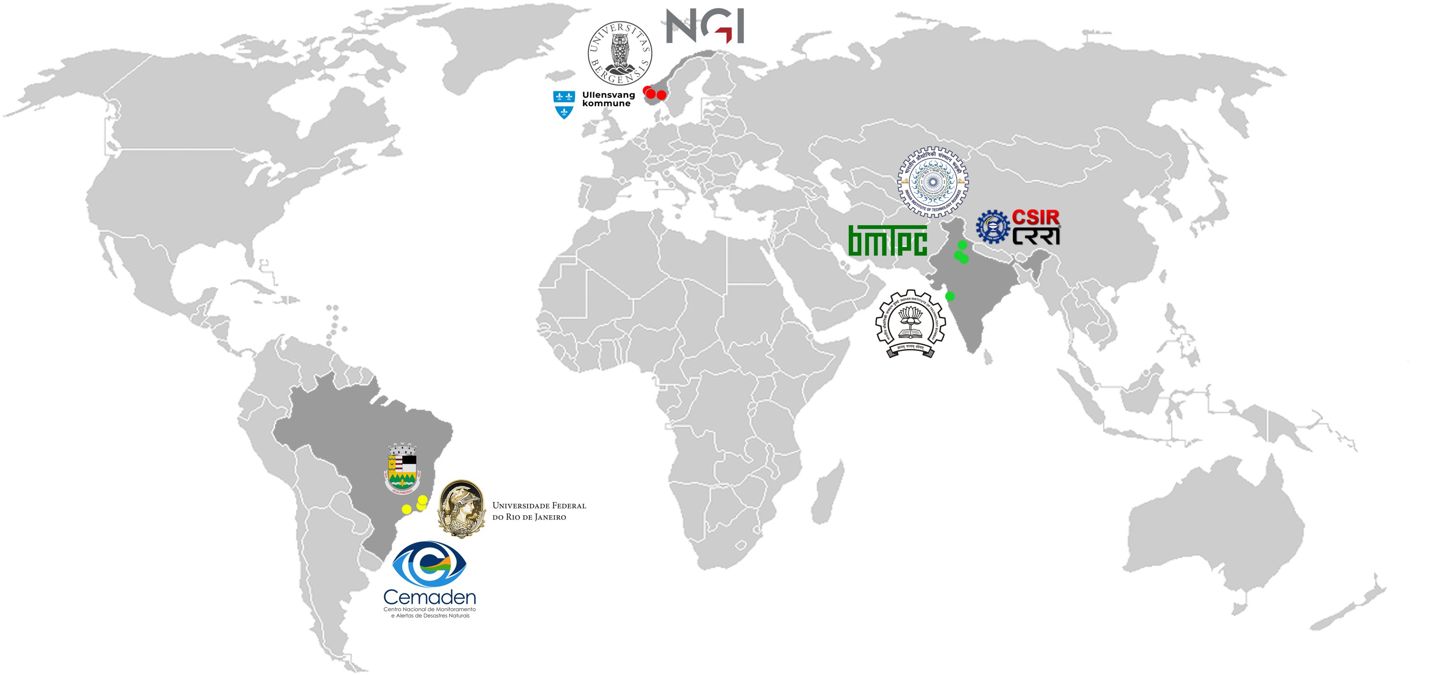NATRISK will develop new links, strengthen existing ties between seven research institutes and universities, and involve three public agencies. NATRISK will facilitate the exchange of researchers, practitioners, managers, and students, disseminate knowledge and expertise to municipalities and the business sector, and foster international education and research on natural hazards, risk, resilience, and associated disciplines.
The primary objective of NATRISK is to prepare students, researchers, and practitioners to solve complex problems in natural hazards and disaster risk to be better equipped to address future societal needs and increase resilience to natural hazards. This will be achieved through the joint interaction of seven research and university partners on dangers and cascading effects; risk assessment, mitigation, and management; and societal resilience. NATRISK aligns with 7 UNSDGs and the Sendai Framework for Disaster Risk Reduction.
Five sub-objectives
- Coalesce expertise from India, Brazil, and Norway on natural hazards and disaster risk.
- Develop knowledge on the means & tools to increase societal resilience to natural hazards.
- Build capacity with the education of tomorrow's engineering researchers.
- Interface with public and business sectors to transfer R&D outputs, initiate spinoffs, and increase awareness.
- Establish lasting partnerships for future research initiatives and innovation.
Natural hazards are geological, hydrological, and environmental processes that may lead to loss of life and widespread damage. Natural hazards have devastating impacts on society, affecting the population, economy, industry, cultural heritage, and the natural environment. Climate change is amplifying the risk of natural hazards to the population and infrastructure in Brazil, India, and Norway. Urbanization and new infrastructure developments in mountainous areas, partly driven by demographic expansion, increase societal exposure.
To remedy research and education needs, NATRISK identifies four pillars (sub-projects) for collective scientific advancement:
- Pillar 1 – Understanding natural hazards, multi-hazards, and cascading effects
- Pillar 2 – Quantifying and assessing risk
- Pillar 3 – Mitigating, perceiving, and communicating risk
- Pillar 4 – Managing disaster risk and enhancing resilience
These pillars are the thematic areas of collaboration and educational activities. To enhance the quality and relevance of activities for the public and business sectors, NATRISK implements an Innovation Task Force to interface with municipalities, entrepreneurs, and other stakeholders.
See the Pillar section above for more information.








